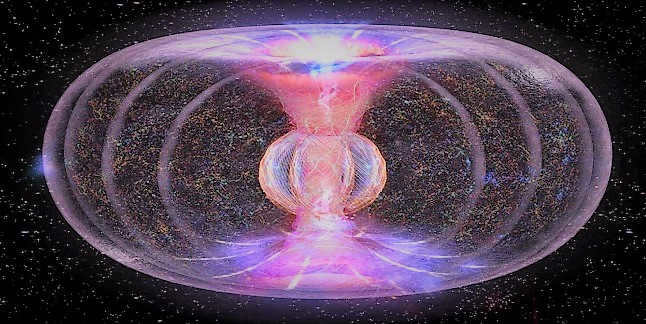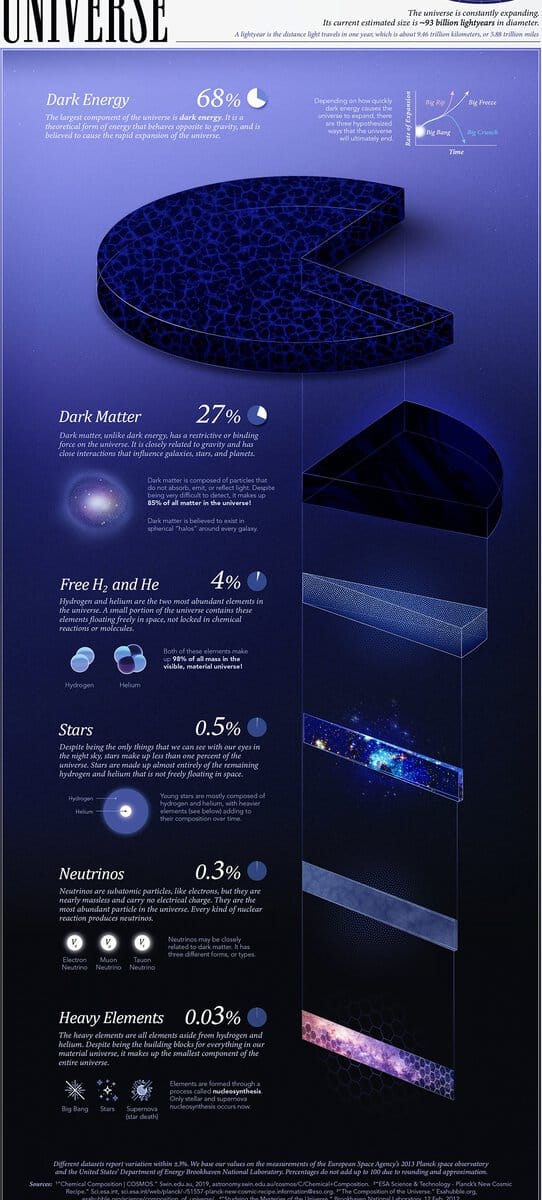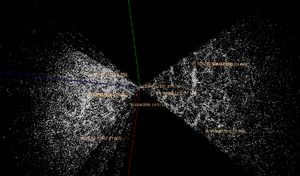
The arrangement of matter on a large scale refers to how matter is distributed in space on a scale larger than 1 Mpc. The way the universe is structured on a large scale is believed to reflect the overall evolution of the universe. There are two methods for studying the large-scale structure:
- Direct measurements of the spatial coordinates (celestial coordinates and redshifts) of bright objects (mostly galaxies) and analysis of the collected observational data. This approach allows us to investigate the distribution of luminous matter on scales as large as hundreds of Mpc.
- Analyzing the effects of gravitational lensing allows us to study the hidden mass structure that can only be observed through its gravitational interactions. Despite the limited amount of available data on gravitational lenses, this method provides insights into the distribution of hidden mass on scales of tens of Mpc.
The first approach, pioneered by Herschel for studying the Milky Way’s structure, is a classical method. Modern equivalents include a spectroscopic survey covering approximately 5% of the sky, with a mean redshift of 0.11 (equivalent to around 500 Mpc) and a total of approximately 220,000 objects.
As we expand our observations to scales of hundreds of megaparsecs, the fluctuations smooth out and the distribution of visible matter becomes more uniform. The accompanying figure clearly illustrates the sponge-like clumpy structure formed by galaxies.
Relic Radiation
Relic radiation refers to the blackbody radiation that fills the Universe with an average temperature of 2.72 K. It is believed to be a residual effect of the big bang. This phenomenon is notable for two distinct reasons:
- The mere fact that it exists.
- The significant amplitudes of fluctuations and their distribution (known as “Sakharov fluctuations”) in the spectrum on scales of approximately one degree.
The existence of relic radiation poses a nontrivial question: if the Universe has always existed, then the origin of this radiation remains unclear, as there are no observable sources capable of producing such a background. However, if the Universe has a finite lifespan, it becomes evident that the appearance of relic radiation can be attributed to the early stages of its existence.
Observations of quasars with a redshift of z≈1.8 confirm the correlation between the temperature of the cosmic microwave background and the redshift. This correlation is demonstrated through the analysis of the superfine structure of neutral carbon lines. Quanta with a temperature of approximately 7.5 K act as a pumping mechanism, enabling the population of levels other than the lowest.
If the photons from the relic background encounter the hot gas of galaxy clusters during their journey, they will be heated up and increase in frequency due to the inverse Compton effect. This process involves the transfer of energy from the hot electrons to the photons. As a result, the flux of relic radiation in the long-wavelength region of the spectrum will decrease in the direction of large galaxy clusters.
This effect can be used to gather information about various aspects, including:
- The pressure of the hot intergalactic gas in the cluster, and potentially the mass of the cluster itself.
- The velocity of the cluster along the line of sight, which can be determined by observing different frequencies.
- The value of the Hubble constant H0 by incorporating observations in the gamma-ray range.
If there are enough observed clusters, it is also possible to determine the total density of the Universe Ω.
The advantage of this phenomenon is that its nature is clear and does not depend on the cosmological redshift.
Entropy of the Universe [ ]
It is also possible to determine the entropy of the Universe from observations of the relic background, which is equal to the ratio of the concentration of equilibrium photons nγ to the concentration of baryons nb.
Let’s express nb in terms of the critical density and the fraction of baryons:
nb = ρcr mp = 1.124 × 10-5 Ωb h1002,
where h1002 is the modern Hubble value expressed in units of 100 km/(c Mpc), and considering that for relic radiation with T=2.73 K
n gamma is approximately 420 (1 + z)^3 \approx 420(1+z)^> cm -3 ,
η is approximately n b / n gamma ≈ 2.7 \times 10^-8 Ω b h 100^2 ∼ 10^-9. /n_<\gamma >\approx 27\cdot 10^\Omega _h_^\sim 10^.>
Fluctuations in the relic background [ ]
Based on 13.7 billion years of data with a one percent margin of error, it is estimated that the age of the Universe is approximately as stated above. This estimation is dependent on the correctness of the underlying model used for data analysis. Other methods of estimating the age of the Universe yield similar results, mostly in agreement with this estimation.
Clusters of stars [ ]
Models based on theoretical calculations [ ]
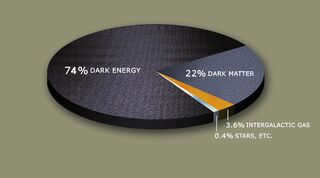
Despite the fact that GR is a local theory, its application on the cosmic scale presents some challenges, to say the least (see alternative theories of gravity). Additionally, it is widely accepted that dark matter is cold, meaning it interacts with baryonic matter. However, it is also believed that during the dark ages, fluctuations in dark matter were two orders of magnitude larger than those of baryonic matter, and the list of complexities continues. Nevertheless, we must currently accept this state of affairs as there is no superior explanation for the observational data.
The challenge with such models is that they must consider dark energy and dark matter, two concepts that are still not well understood. Additionally, the range of possible scenarios requires making certain assumptions and principles. Currently, there is a consensus that any model of the universe must adhere to the cosmological principle. This principle states that there are no distinct regions or directions in the universe on large spatial scales. As a result, matter in the universe is homogenous and isotropic on large scales (greater than 100 Mpc).
In general, the construction of these models relies on the following theories and branches of physics:
- Equilibrium statistical physics, including its fundamental concepts and principles, as well as relativistic gas theory.
- The theory of gravitation, typically the general theory of relativity.
- Here is some information about elementary particle physics, including a list of basic particles, their characteristics, types of interactions, and conservation laws.
The Inflationary Model
The Big Bang Theory (Hot Universe Theory)
This theory addresses the fundamental questions about the origins and evolution of the universe. Did the universe always exist or did it come into existence from something? And if it did have a beginning, how did it evolve in its early stages? Historically, there was an alternative theory called the Cold Universe Theory, but the Big Bang theory is widely accepted.
The event that initiated the universe is referred to as the Big Bang, disregarding any inquiries about the explosion’s nature. It is crucial to note that at the time of the explosion, all the energy in the current Universe was confined to a small volume, indicating that the temperature was extremely high (in contrast to the theory of a cold Universe, where the temperature near the Big Bang is low). This elevated temperature and density gave rise to the emergence of the first elementary particles, which, as the Universe expanded and cooled, gradually transformed into more complex particles, eventually leading to the formation of ordinary protons, neutrons, positrons, and so on. Along the way, the question of “Why were there fewer antiparticles than particles?” remains unanswered, while the concept of particle dominance over antiparticles is introduced (according to the most recent data, there should be one million and one particles per million antiparticles). By incorporating this condition, one can construct a theory of primary nucleosynthesis that aligns reasonably well with the observed data.
The Model of the Expanding Universe
The model of the expanding universe aims to describe and provide an explanation for the phenomenon of expansion itself. It typically disregards the specifics of when and why the universe began to expand, as the Big Bang theory is considered to be just one particular instance of the expanding universe model. The majority of these models are based on General Relativity (GR) and its geometric interpretation of gravity. It is convenient to examine the expansion of the universe by considering an isotropically expanding medium within a coordinate system that expands alongside matter. This allows for the formal reduction of the universe’s expansion to a change in the scale factor of the entire coordinate grid, with galaxies being positioned at the nodes of this grid. This coordinate system is commonly referred to as the collateral system, with the observer typically being assigned as the origin.
The concept of the evolution of vast structures
The Destiny of the Universe
The inquiry regarding the configuration of the universe is a significant unresolved issue in cosmology. From a mathematical perspective, we are confronted with the task of identifying a three-dimensional shape that most accurately represents the spatial aspect of the Universe.
Firstly, it is uncertain whether the Universe is spatially flat, meaning that the principles of Euclidean geometry are applicable on the largest scales. Presently, the majority of cosmologists hold the belief that the observed Universe is almost entirely spatially flat, with localized distortions in space-time caused by massive objects. This perspective has been corroborated by recent discoveries concerning Cosmic Strings [ ]
Cosmic strings are theoretical structures that are postulated to exist based on certain inflationary models in order to explain the formation of the universe. Scientists believe that cosmic strings are thin tubes made of high-energy vacuum that stretch across the universe in a web-like pattern. The concept of cosmic strings was first introduced in a research paper written by T. Kibble from the Imperial College of Science and Technology in London in 1976. These strings are incredibly thin, with a thickness of about 10 to the power of -30 centimeters, but they possess an immense weight of about 10 hexadecimal tons per centimeter. If a cosmic string were to intersect with a person, the gravitational force would cause their head and legs to collapse at a speed of 6 kilometers per second. Likewise, if our planet were to encounter a cosmic string, it would be instantly severed into multiple pieces, much like an egg being sliced by a wire slicer. Fortunately, if cosmic strings do exist, the closest ones are estimated to be located approximately 300 million light years away from Earth.
Models from the Past [ ]
Cosmology and cosmogony have a long history, with civilizations such as Dvurechye and Ancient Egypt having their own interpretations of the universe. The first scientific assumptions about the structure of the universe can be traced back to Ancient Greece. The concept proposed by Pythagoras, Aristotle, and Ptolemy was widely accepted, stating that the Earth is at the center of the timeless cosmos, surrounded by planets including the Sun, and stars at the outermost edge of the universe. Democritus’ belief in the infinity of the universe and the existence of multiple inhabited worlds was less popular. As observations and theories advanced, Copernicus and Newton developed a heliocentric model placing the Earth in orbit around the Sun. Subsequent advancements in astronomy led to the discovery of the Milky Way, other galaxies, and relic radiation. Modern cosmology is based on precise studies of galaxy distribution in space and the analysis of their spectra.
There is a hypothesis that suggests our Universe is just one component of a vast collection of other Universes, known as the Multiverse (or Metauniverse). The concept of chaotic inflation theory proposes an infinite array of Universes, each with its own unique set of physical constants [2]. In an alternative theory, Universes are distinguished by their quantum dimensions [3]. However, it is important to note that these assumptions cannot be confirmed through experimental means.
Other terms [ ] .
In the past, there have been different words used to describe “the entirety of space”, including variations and equivalents in various languages, such as “celestial sphere”, “cosmos”, and “world”. The term “macrocosmos” has also been utilized, although its purpose is to define large-scale systems, along with their subsystems and components. Similarly, “microcosmos” is employed to denote small-scale systems within a much larger system in which the original system is a component. Nowadays, the term “Metagalaxy” is occasionally used as a synonym for the observable portion of the universe.
Notes [ ]
See also [ ]
References [ ]
Cosmologists have discovered fresh evidence supporting the Standard Model of cosmology, this time utilizing data on galaxy cluster structure. The “Hitech” publication presents the key findings from the latest research.
Read “Hitech” here
A team of physicists, led by researchers from the Department of Energy’s SLAC National Accelerator Laboratory and Stanford University, conducted a comprehensive analysis of X-ray emissions from galaxy clusters. This investigation allowed the physicists to uncover the distribution of matter within the clusters, providing valuable data for testing the prevailing theory known as Lambda-CDM, which explains the structure and evolution of the universe.
The fundamental framework of the cosmos
The Lambda-CDM model, also known as the Lambda-CDM model, is the prevailing cosmological theory. This model posits that the Universe, which has a flat spatial configuration, is not only composed of ordinary baryonic matter, but also contains mysterious dark energy and cold dark matter. According to this framework, the estimated age of the Universe is approximately 13.799 ± 0.021 billion years, aligning with empirical observations.
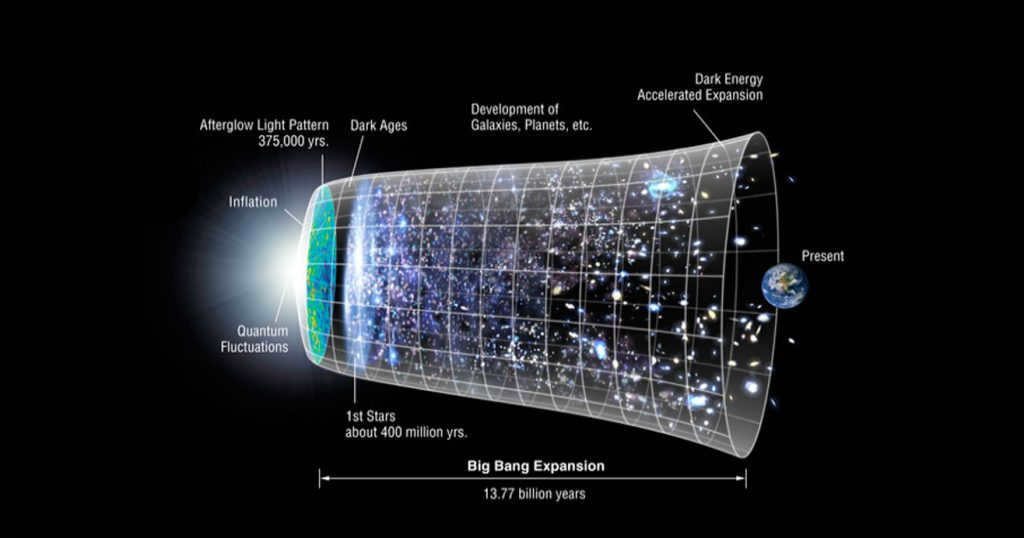
The primary issue with observations
When it comes to deducing the mass distribution of galaxy clusters based on their X-ray emission, the most dependable method is to ensure that the energy of the gas within the clusters is in equilibrium with the gravitational force that holds the entire system together. Consequently, scientists have primarily focused on studying clusters that have reached a state of “relaxation” in their measurements of mass distributions. It is crucial to consider this selection of relaxed clusters when comparing them with theoretical forecasts.
Scientists’ breakthrough
A group of physicists from Stanford University conducted a thorough analysis of the computer-simulated clusters generated by The Three Hundred Project.
As an integral component of The Three Hundred Project, researchers are investigating 324 expansive galaxy clusters that have been meticulously modeled utilizing a range of comprehensive hydrodynamic re-simulations and semi-analytical models. The primary objective of this initiative is to establish an extensive catalog of theoretically modeled galaxy clusters that can be applied in the fields of cosmology and astrophysics.
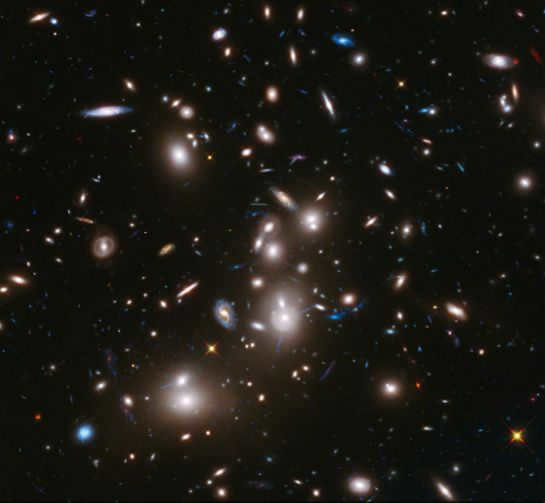
The scientists performed calculations to determine the expected X-ray emission for each simulated cluster. They then applied the same observational criteria that were used to identify “relaxed” galaxy clusters in real data. These criteria were used to screen the simulated images.
Next, the researchers examined the relationship between three properties of the clusters: their mass, their level of concentration at the center, and their redshift, which indicates the age of the universe. The scientists analyzed data from simulated clusters generated by the Three Hundred Project, as well as data from 44 real clusters observed using NASA’s Chandra X-ray Observatory.
According to the physicists, there were consistent findings from both sets of data. In general, over time, the clusters became more concentrated towards the center. Additionally, the less massive clusters seemed to have a greater concentration towards the center compared to less massive objects. The researchers discovered that the observed relationships matched the theoretical predictions, which ultimately “offered substantial evidence for the Lambda-CDM paradigm,” as stated by the scientists.
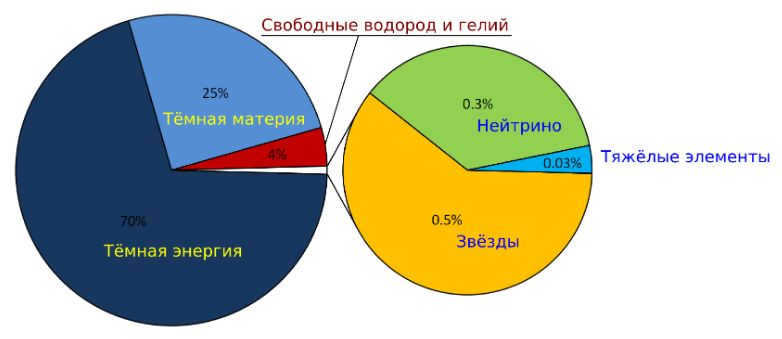
What Comes Next.
In the coming years, scientists are aiming to expand both the observed and modeled data sets of galaxy clusters. Ongoing projects supported by SLAC, such as the Vera Rubin Observatory’s Legacy Survey of Space and Time and the fourth-generation Cosmic Microwave Background Experiment (CMB-S4), will contribute to the discovery of many more galaxy clusters. Additionally, there are several planned space missions that will assist physicists in their research. One example is the upcoming launch of the European Space Agency’s ATHENA satellite. By utilizing the latest data, scientists will be able to conduct more extensive measurements in the X-ray range in the future.
SLAC cosmologists are currently focused on enhancing the magnitude and precision of computer simulations pertaining to the cosmos. This advancement will enable more comprehensive examinations of galaxy clusters and establish stringent boundaries on alternative cosmological theories.
Further details can be found here:
Featured on the front page: a chronological display of the universe
Created by Design Alex Mittelmann, Coldcreation

The cosmos is an immense and uncharted realm. It’s crucial to understand that comprehending a specific subject or matter can take decades, or even centuries. There are countless paths to explore, with hundreds of branches to delve into. To prevent being overwhelmed by such a vast amount of information, we provide a compilation of topics that shed light on the mysteries of the universe.
Some individuals theorize that the universe will conclude with a massive explosion. It will then contract until it reaches its initial state, leading to a new Big Bang and the formation of a subsequent universe. This concept serves as the foundation for the cyclic version of the universe.


There is a consensus among the majority of scientists that the universe has a flat shape. This conclusion is drawn from the data collected by the WMAP instrument, which studies relic radiation. However, there are dissenting opinions. It is worth remembering that not too long ago, people strongly believed in the flatness of the Earth, so skepticism is always present in such matters.
Naturally, the aforementioned details are merely a brief overview, but you can delve into the specifics by following the provided links. Each article delves into a captivating topic and presents the information in a comprehensible manner. Consequently, you don’t need to devote your entire existence to studying the cosmos, as scientists have already provided you with readily available knowledge. You can expand your understanding of the solar system through descriptions, features, and high-quality images of the planets, as well as explore stars, galaxies, exoplanets, nebulae, star clusters, pulsars, quasars, black holes, constellations, dark energy, and dark matter. All you have to do is click on the link that piques your interest.
The Composition of the Cosmos
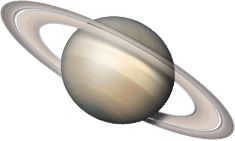
A skilled tarot reader will provide insight into your future. They can offer guidance on various aspects of life, including relationships and decision-making.

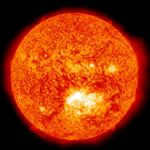
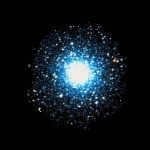
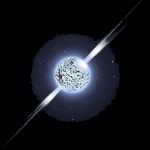
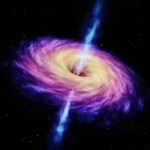

So what exactly is the Universe?
Many individuals fail to comprehend the immense complexity and scale of the question, “What is the Universe?” It would require years of dedicated research to even scratch the surface. We may not simply be referring to a vast realm, but rather an infinite one. This is why one must possess a deep passion for their work in order to fully delve into these enigmas, which may take a lifetime to unravel.
What is the Universe, you ask? In essence, it encompasses the entirety of existence. It encompasses all time, space, matter, and energy, which have been shaping and expanding for over 13.8 billion years. The true extent of our world’s expanse remains uncertain, with no definitive answer regarding its ultimate boundaries. However, through ongoing research, numerous theories are being formulated and piece by piece, they are gradually assembling the larger picture.
Definition of the Universe
The term “universe” originates from the Latin word “universum”. Cicero was the first to use it, and it later gained widespread usage among Roman writers. This term referred to the world and the cosmos. During that era, people understood the Earth, all known living organisms, the Moon, the Sun, the planets (Mercury, Venus, Mars, Jupiter, and Saturn), and the stars to be encompassed by these words.
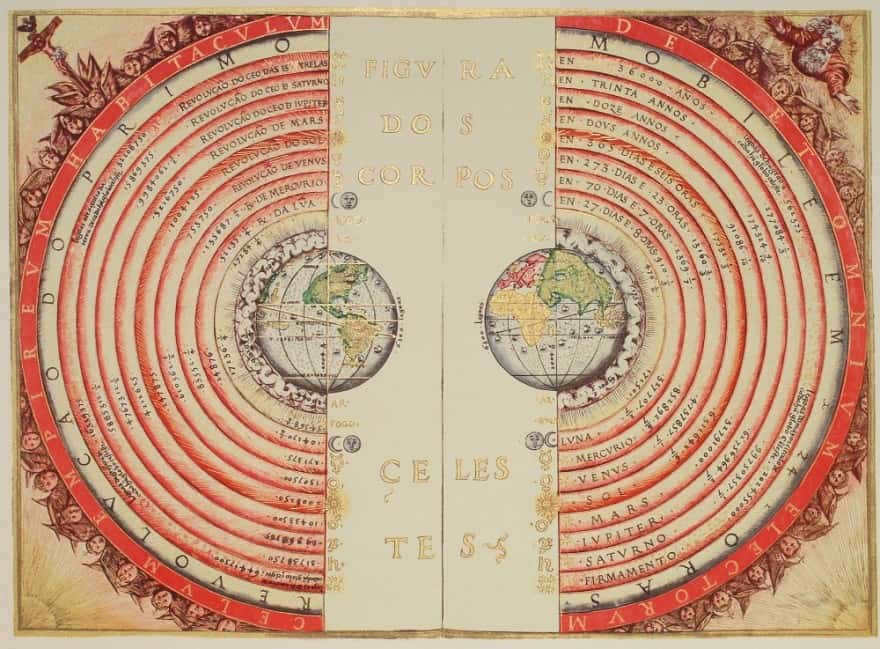

Ptolemy’s geocentric understanding of the cosmos, depicted by Bartolomeu Velho
Occasionally, the term “cosmos” is utilized instead of “universe,” which is derived from the Greek word for “world.” Additionally, “nature” and “everything” were among the alternative designations. The contemporary understanding encompasses all that exists within the universe – our solar system, the Milky Way, and other celestial structures. It also encompasses various forms of energy, space-time, and the laws of physics.
Origin of the Universe
What is the source of the cosmos and the entirety of our understanding? The universe came into existence roughly 13.8 billion years ago through a cataclysmic event known as the Big Bang. While there are alternative theories, such as the fluctuating universe or steady state theory, the Big Bang remains the only explanation capable of accounting for the creation of matter, the establishment of physical laws, and the formation of various structures. Furthermore, this theory provides insights into the causes of cosmic expansion, the nature of relic radiation, and numerous other well-documented phenomena.
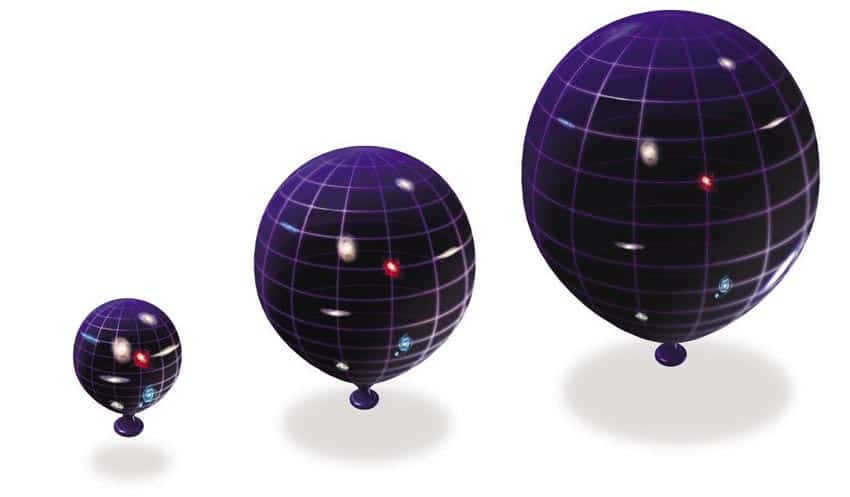
Starting with the singularity, the Big Bang theory suggests that the Universe began with infinite density and calculable time, leading to the expansion process. As temperatures dropped after the initial stage, subatomic particles and simple atoms formed. These formations then combined with gravitational forces to create giant clouds, ultimately giving rise to stars and galaxies.
A skilled tarot reader can provide insights into the future, the potential outcomes of relationships, and guidance on making the right decisions.

The official estimation for the age of the universe is 13.8 billion years. Through the utilization of particle gas pedals, theoretical principles, and the study of celestial objects, scientists have managed to reconstruct the sequence of events, taking us back from the present day to the very beginning of everything.
However, the most remote period of the universe (10 43 to 10 11 seconds) remains a topic of debate. It is important to note that the laws of modern physics were not yet applicable during this time, making it impossible to fully comprehend how the Universe functioned. Nevertheless, there are proponents of various theories that have helped identify the key epochs in the evolution of the universe: singularity, inflation, and cooling.

A visual depiction of the singularity of the Universe
The singularity, also known as the Planck epoch, refers to the earliest stage of the universe. During this period, matter was concentrated at a single point on an infinite plane, where extreme temperature conditions prevailed. Gravity was the dominant force shaping the physical plane.
This phase lasted from 0 to 10^43 seconds. The epoch earned its alternative name in honor of Planck, as only this observatory had the capability to delve into such a gap. The universe lacked stability due to the fact that matter was not only incredibly hot, but also highly dense. As it expanded and the temperature decreased, physical laws began to emerge. From 10^43 to 10^36 seconds, the transition to lower temperatures occurred.
The emergence of the fundamental forces responsible for the universal mechanisms began. Gravity was the first force to arise, followed by electromagnetism and the initial nuclear force. Inflation has been ongoing since 10^32, according to models. These models indicate that the universe was filled with homogeneous energy of high density, which decreased in temperature as it expanded.
At 10^37 seconds, the release of forces triggered exponential growth. This period marks the beginning of baryogenesis, a hypothetical event characterized by extremely high temperatures where random particle motions occurred at relativistic velocities. In these collisions, particles were both created and destroyed, which is believed to be the reason why matter dominates over antimatter.
It is thought that, after approximately 10 to the power of 11 seconds, the energy rapidly diminished. Following another 10 to the power of 6 seconds, quarks and gluons merged to create baryons, resulting in an excess of them. The temperature no longer reached the necessary level, thereby eliminating the opportunity for proton-antiproton pairings to form new pairs. Mass annihilation took place, leaving only one-tenth of the original number remaining. The same scenario unfolded for electrons and protons a second later.
The remaining protons, electrons, and neutrons remained static, with only photons and neutrinos contributing to the overall density. After a few more minutes elapsed, nucleosynthesis commenced.
The temperature stabilized at one billion kelvin and the density decreased. As a result, protons and neutrons began to fuse, forming deuterium (an isotope of hydrogen) and helium atoms. However, the majority of protons still remained unpaired.
Looking ahead 379,000 years into the future, hydrogen nuclei and electrons merged to form atoms, causing the radiation to spread even further. This radiation is now known as relic light, the oldest light in the universe. As it expanded, its density and energy diminished. Presently, the temperature stands at 2.7260 ± 0.0013 K (-270.424 °C), with an energy density of 0.25 eV/cm 3 . No matter which direction you turn, you will come across traces of this radiation in every corner.
Evolution of the Universe
The development and evolution of the Universe occurred through a series of processes. Over billions of years, gravity played a major role in shaping the Universe. Denser regions attracted matter and as a result, gas clouds, stars, galaxies, and other celestial objects formed. This period is known as the Structural Epoch and it marked the birth of the modern Universe. During this time, visible matter organized itself into different formations such as galaxies, clusters, and superclusters.
The specifics of this process depend on the type and quantity of matter present. There are four types of dark matter: cold, warm, hot, and baryonic. The standard model, known as Lambda-CDM (cold dark matter), describes the behavior of particles moving at speeds slower than the speed of light.
Comprising 23% of the total matter in the universe, baryonic matter only accounts for 4.6%. The term “Lambda” refers to the cosmological constant formulated by Albert Einstein, which demonstrated the constancy of the mass-energy balance.
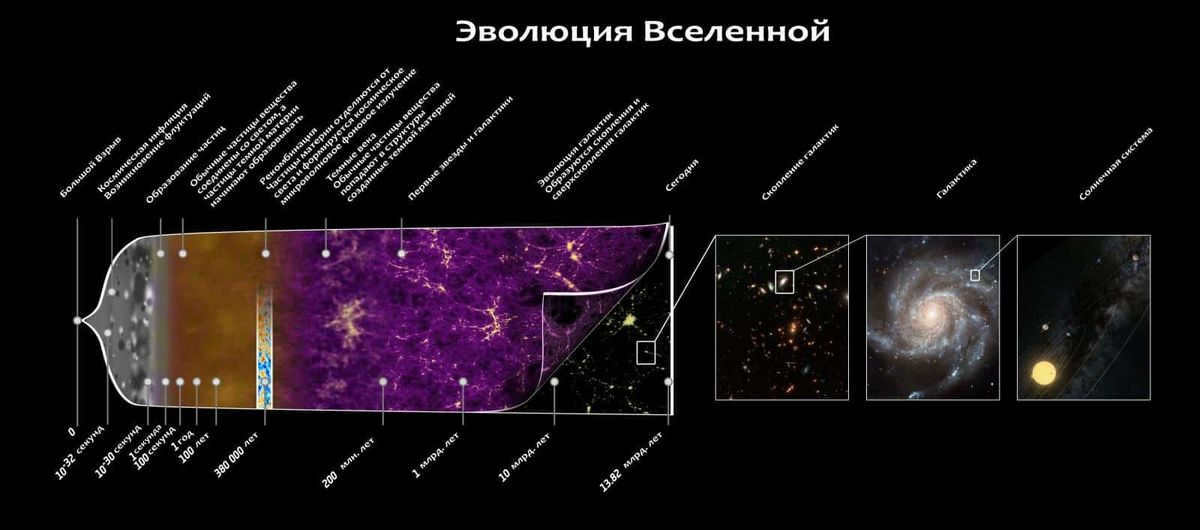
Phases in the development of the cosmos. Simply click on the image to enlarge it
Furthermore associated with mysterious energy, which initiated the universe’s expansion and resulted in a uniform structure. Dark energy cannot be directly observed, but its existence is supported by numerous hypotheses. It is estimated that 73% of space is permeated by this enigmatic force.
During the early stages, gravity reigned supreme, particularly when baryonic matter was more concentrated. However, dark energy grew in influence and became the prevailing force, leading to the acceleration of all processes and heralding the beginning of the Age of Acceleration.
This era is thought to have commenced 5 billion years ago. Einstein’s equations describe this epoch, although the true essence of dark matter remains undisclosed. Furthermore, there have not yet been devised theories that can elucidate the events in the cosmos within the initial 10^15 seconds following the inception of everything.
Nevertheless, researchers persist in their efforts and are conducting experiments with the Large Hadron Collider, endeavoring to recreate the requisite circumstances for the Big Bang. Advances in this domain will aid in comprehending the interaction between gravity and the weak and strong nuclear forces, as well as electromagnetism.
Composition of the Cosmos
Despite the fact that the most ancient light, also known as relic radiation, has traveled a distance of 13.8 billion light years, this measurement does not accurately represent the actual size of the universe. It is important to note that space has been expanding at an exceedingly rapid pace, surpassing the speed of light, for billions of years. This expansion has resulted in the inability to perceive the universe’s outermost boundary, if one even exists.
Scientists estimate that the universe spans a diameter of 91 billion years (or 29 billion parsecs). As a result, there are approximately 46 billion light years of observable space in both directions from our own system. However, the true dimensions of outer space remain unknown, leaving open the possibility that the universe lacks a definitive boundary.
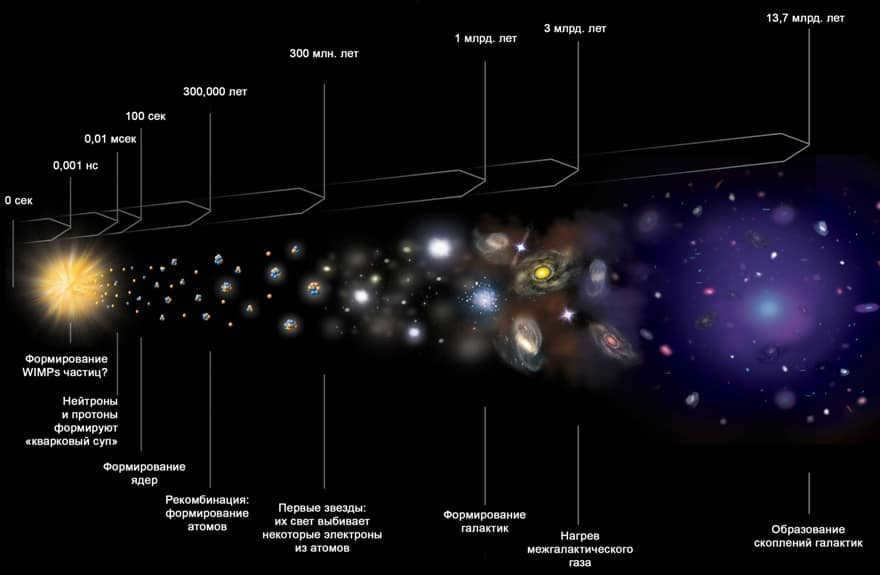
Diagram of the Universe from the Big Bang to our era, showing the distribution of matter in correlation with structures.
When observing the galactic limits, we can see a pattern of planets, stars, and nebulae alternating with empty areas. This pattern remains consistent even when we zoom out. Galaxies are separated by patches of gas and dust. At the largest scale, we can observe super clusters forming into filaments, with giant cosmic voids separating them.
A skilled tarot reader can provide answers to various questions:
What does the future hold for you? How will your relationships develop? Which decision is the right one to make?

Space-time has the ability to exist in three different configurations: positively curved, negatively curved, and flat. These configurations are based on four dimensions (x, y, z coordinates, and time) and are dependent on the expansion of space (whether it is infinite or finite).
The positively curved configuration can be visualized as a four-dimensional sphere. It has an endpoint, but there is no sharp edge that can be seen. The negatively curved configuration, also known as open, resembles a saddle with no edge. The image below shows the possible shapes of the universe.
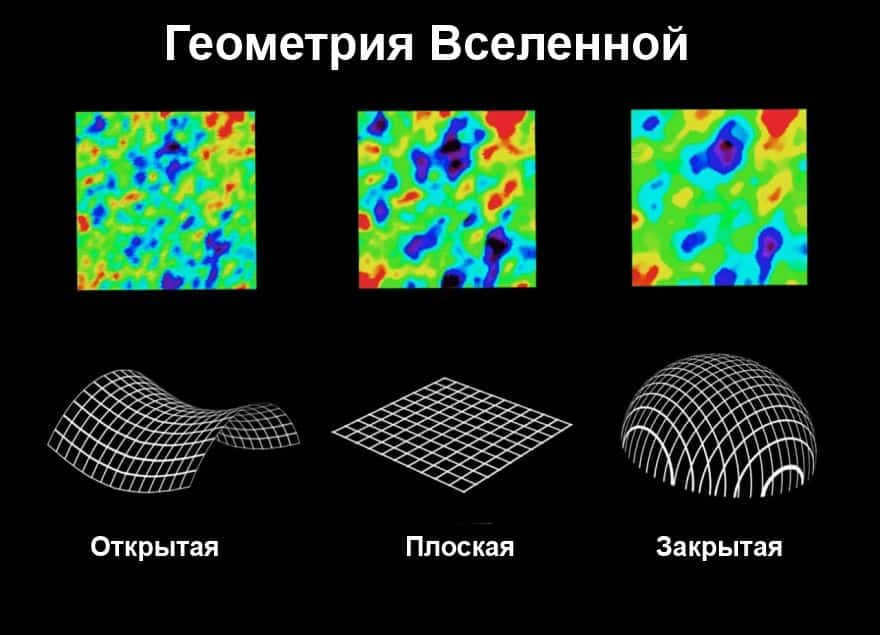
Possible configurations of the observable Universe.
In one scenario, the Universe’s expansion would halt due to an immense amount of energy. In another, there is insufficient energy to cease the expansion. And in the final scenario, a specific amount of energy would cause the expansion to halt, but only after an infinite duration of time.
What lies ahead for the universe?
If we are aware of a point of origin, it is only natural to ponder what lies at the end. What awaits us? Will the universe continue to expand indefinitely? Or will it eventually collapse back into a compact, primordial state? How will the universe meet its demise? These inquiries were reignited during the discourse surrounding the true model of the universe. In the 1990s, the scientific community reached a consensus on the Big Bang theory, which presented two potential outcomes.
Introducing the Great Compression. The cosmos will persist in its expansion until it reaches its utmost size and subsequently initiates the course of self-annihilation. This outcome becomes plausible if the mass density surpasses the critical density. Conversely, if this value remains identical or diminishes, the Great Frost becomes a factor. In this scenario, the expanse of space would keep expanding until the stars become incapable of supporting the formation process (as all the gas is depleted). All preexisting stars would then combust and metamorphose into white dwarfs, while neutron stars would undergo a transformation into black holes.
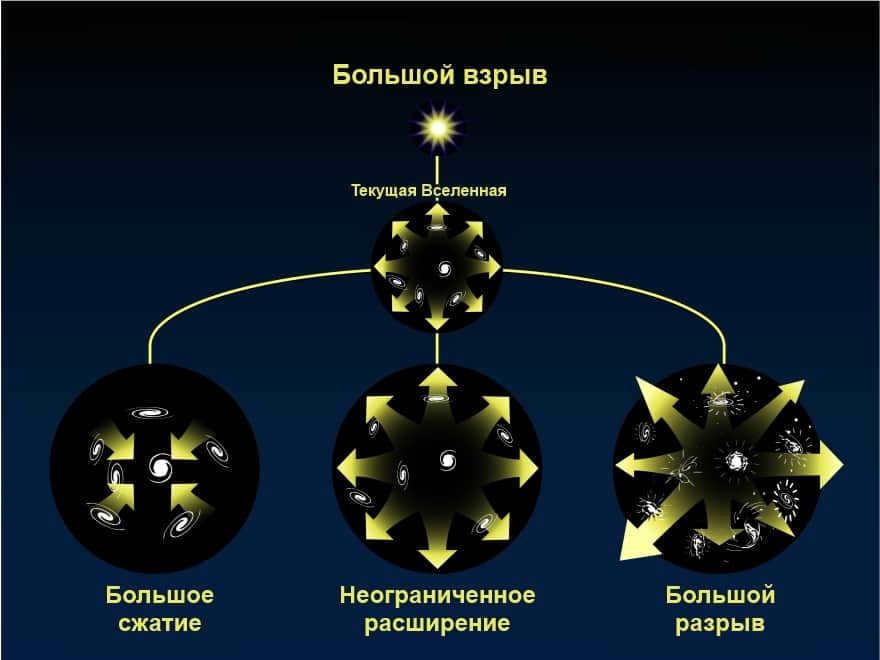
Possible scenarios for the ultimate fate of the universe
Naturally, black holes would begin to gravitationally attract, resulting in the emergence of colossal celestial monsters. The ambient temperature of space would plummet to absolute zero, causing the black holes to evaporate. Entropy would rise to the point where a heat death scenario is triggered, rendering the extraction of any structured form of energy impossible.
Another possibility is the phantom energy theory, which postulates that galactic clusters, planets, stars, nuclei, and even matter itself would disintegrate due to cosmic expansion. This phenomenon is known as the Big Rip.
Throughout history, the study of the natural world has been a constant pursuit. From ancient times, tales and legends have been used to explain the origins of the universe. Creation stories often attribute the beginning of everything to a divine being or beings.
In the ancient city of Babylon, astronomy emerged as a scientific discipline. As early as 2000 B.C., astronomers in Babylon were mapping constellations and developing calendars. They even made predictions for the next millennium. Greek and Indian philosophers took a different approach to understanding the universe, focusing on cause and effect rather than divine intervention. Thinkers like Thales and Anaximander believed that everything originated from a primordial substance.
Empedocles, an ancient philosopher from the 5th century BC, was the initial proponent in the Western world of the concept that the universe can be symbolized by the elements of earth, air, water, and fire. This particular framework gained significant traction among philosophers due to its striking resemblance to the Chinese system, which categorizes the elements as metal, wood, water, fire, and earth.

Originally, the atomic theory proposed that various substances consisted of atoms with distinct shapes.
However, it was only with the contributions of Democritus that the concept of indivisible particles, or atoms, constituting space emerged. This idea was further developed by Kanada, an Indian philosopher, who believed that light and heat were essentially the same substance but manifested in different forms. Taking it even further, the Buddhist philosopher Dignana argued that all matter is fundamentally energy.
The concept of the limited duration of time was introduced in Christianity, Judaism, and Islam, where it was believed that the universe had a starting point and a final destination. Over time, cosmology evolved, and the Greeks proposed the geocentric model, which posited that the Earth was the central point around which all celestial bodies orbited. This model was extensively described in Ptolemy’s Almagest and would remain the prevailing belief until the Middle Ages.
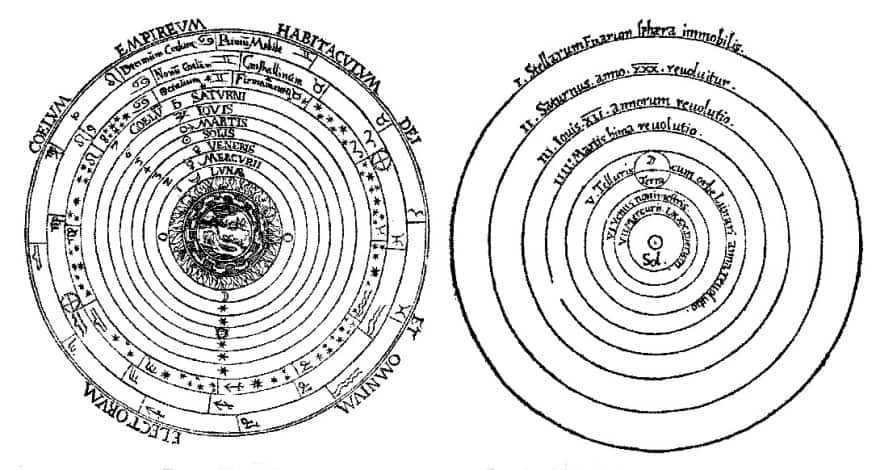
Comparison of the geocentric and heliocentric models of the Universe
Even prior to the scientific revolution of the 16th-18th centuries, there were scientists who advocated for the heliocentric model, which posits the Sun as the center of our solar system. Among them were Aristarchus of Samos (310-230 BC) and Seleucus (190-150 BC).
While Indian, Persian, and Arab philosophers expanded upon Ptolemy’s ideas, there were also revolutionaries such as As-Sijizi or Aryabhata. In the 16th century, Nicolaus Copernicus emerged and is credited with proposing the heliocentric model and providing evidence for its validity. This evidence was based on seven principles:
- Celestial bodies do not rotate around a single point.
- The Moon orbits around the Earth, while all celestial bodies revolve around the Sun, which is positioned near the center of the universe.
- The distance between the Earth and the Sun is only a fraction of the distance between the Sun and other stars, hence why we do not observe any parallax.
- The stars remain stationary, and their apparent motion is a result of the Earth’s axial rotation.
- The Earth follows an orbital path, causing the Sun to appear to move.
- The Earth undergoes multiple motions.
- The Earth’s orbital motion creates the illusion that the other planets are moving in the opposite direction.

The cover page of the Dialogue (1632)
In 1532, a more elaborate version of his concepts was completed in the form of “On the Rotation of the Celestial Spheres.” The manuscript presented the same arguments, but this time supported by scientific evidence and examples. However, the author was concerned about potential persecution from the church, so the work was not published until 1542, after his death.
His concepts were embraced by scientists during the 16th and 17th centuries. Galileo Galilei deserves special recognition in this regard. Utilizing his innovative invention, the telescope, he observed the Moon, Sun, and Jupiter, which contradicted the geocentric model and aligned with the heliocentric model.
During the early 17th century, Galileo’s publications emerged, showcasing his intriguing observations of the Moon’s cratered surface, Jupiter’s largest satellites, and sunspots. Additionally, he challenged the previous notion of the Milky Way as a nebula, as he noticed the presence of densely packed stars in front of him.
Fast forward to 1632, Galileo presented his heliocentric model in his treatise “Dialogue on the Two Systems of the World,” effectively shattering the long-held beliefs of Ptolemy and Aristotle. This further solidified Johannes Kepler’s theory of elliptical orbits of the planets. And then comes Isaac Newton, who introduced the revolutionary theory of universal gravitation in his 1687 treatise, where he outlined the three laws of motion:
- The resultant of the external forces (F) is equal to the product of the mass (m) of the object and the acceleration vector (a): F = ma.
- When one object applies a force on another, the second object exerts a force of equal magnitude but opposite direction simultaneously.

A visual representation illustrating the vast distances between planets in our solar system.
These fundamental principles outlined the connection between objects, the exerted forces, and their resulting motion. They formed the foundation of classical mechanics. Newton utilized these principles to calculate the masses of planets, determine the Earth’s shape at its poles and equator, and demonstrate how the gravitational force between the Sun and the Moon generates tides on our planet.
A significant breakthrough occurred in 1755 when Immanuel Kant proposed the concept that the Milky Way is an immense assemblage of stars united by a mutual gravitational pull. These stars rotate, forming a flattened disk, within which our solar system resides.
In 1785, William Herschel had the desire to calculate the shape of the galaxy; however, he was unaware that a significant portion of it was obscured by dust and gas. It wasn’t until the 20th century and the arrival of Einstein with his Special and General Theories of Relativity that we gained a better understanding. Einstein’s initial goal was to reconcile the laws of Newtonian mechanics with those of electromagnetism. In 1905, the Special Theory of Relativity was introduced.
This theory stated that the speed of light remains constant in all inertial coordinate systems. This contradicted the previous belief that light passing through a moving medium would match the speed of the medium plus the speed of light passing through it.
It transpires that this hypothesis rendered the medium seem unneeded altogether. During the years 1907 to 1911, Einstein pondered over how to employ the hypothesis in relation to gravitational fields. Eventually, he devised the General Theory of Relativity (where time is relative to the observer and contingent upon their position within the gravitational field).
Furthermore, the equivalence principle comes into play here – gravitational mass is equal to inertial mass. Additionally, he prophesied the deceleration of gravitational time, the existence of black holes, and the expansion of the universe.
Back in 1929, Edwin Hubble made a groundbreaking discovery by proving the expansion of the universe. He accomplished this by examining the redshift of galaxies as they moved away from our very own Milky Way. Furthermore, he was able to establish a direct correlation between the distance of a galaxy and the speed at which it was receding.
Fast forward to 1931, Georges Lemaître independently confirmed the expansion theory and put forth the idea that the universe originated from a minuscule object, giving birth to what is now known as the Big Bang theory. This concept sparked intense debate during the 1920s and 1930s, as there were still those who believed in a static universe.
However, the dispute was resolved in 1965 with the discovery of relic radiation. Simultaneously, there is a theory proposing that dark matter is the elusive mass of the Universe. Moreover, the knowledge of the Universe was expanded through the contributions of Stephen Hawking and other physicists who verified the validity of the Big Bang theory.
During the 1990s, significant efforts were dedicated to unraveling the mysteries of dark energy. Its emergence provided an explanation for the continuous acceleration of space. Naturally, the advent of new telescopes enabled us to explore the depths of space for the first time, thereby delving into the past and determining the age and density of matter.
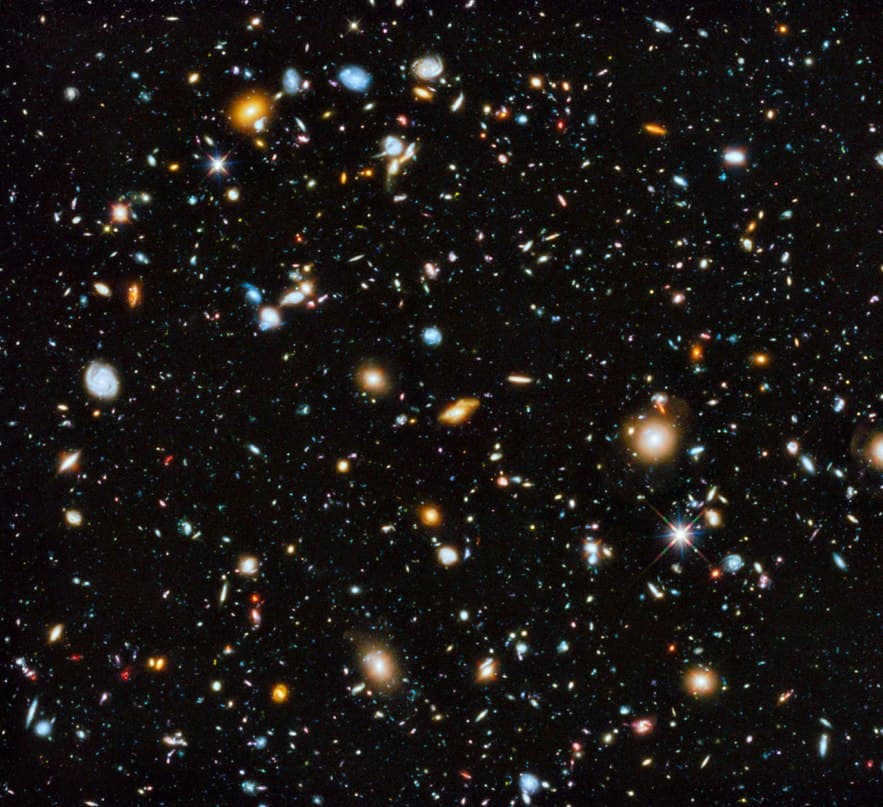
The latest findings from 2016 reveal that the rate of expansion of the cosmos is faster than previously anticipated, resulting in a 5-9% increase in the Hubble constant. The forthcoming James Webb telescope, a next-generation marvel, will facilitate further advancements in unraveling the mysteries of the universe.
Humanity has undoubtedly made significant strides in the exploration of our world. However, we have merely cracked the door open and gazed in awe at the countless wonders that still defy explanation. Thus, there are countless more revelations and astonishments awaiting us.
- Fascinating insights about the cosmos
- Is the entire universe undergoing expansion?
- What is the rate of expansion of the universe?
- What fate awaits the universe in the end?
- The conclusion of all things
- Expanding Universe: Hubble or LeMeter?
- The largest star in the Universe
- How many atoms exist in the Universe?
- What is the expansion of the Universe?
- What is the geocentric model of the Universe?
- Big freeze
- The great compression.
- What is the shape of the Universe?
- The ultimate map of the Universe.
- How vast is the universe?
- How old is the universe?
- No Big Bang.
- How many stars are there in the universe?
- Structure of the Universe
- The destiny of the Universe
- Center of the Universe
- Wimp
- Does the universe have a conclusion?
- Hubble’s Law
- Quintessence
- Parallel Universe
- Dark Matter
- What is the theory of multiple universes?
- Entropy and its significance
- How vast is the cosmos?
- Exploring the field of cosmology
- The extreme coldness of outer space
- Unveiling the first living creature in space
- Understanding the darkness of space
- The limitations of launching garbage into space
- Counting the number of satellites in orbit
- Defining the concept of absolute space
- Exploring the boundaries of outer space
- Understanding the nature of interstellar space
- Examining the phenomenon of relic radiation
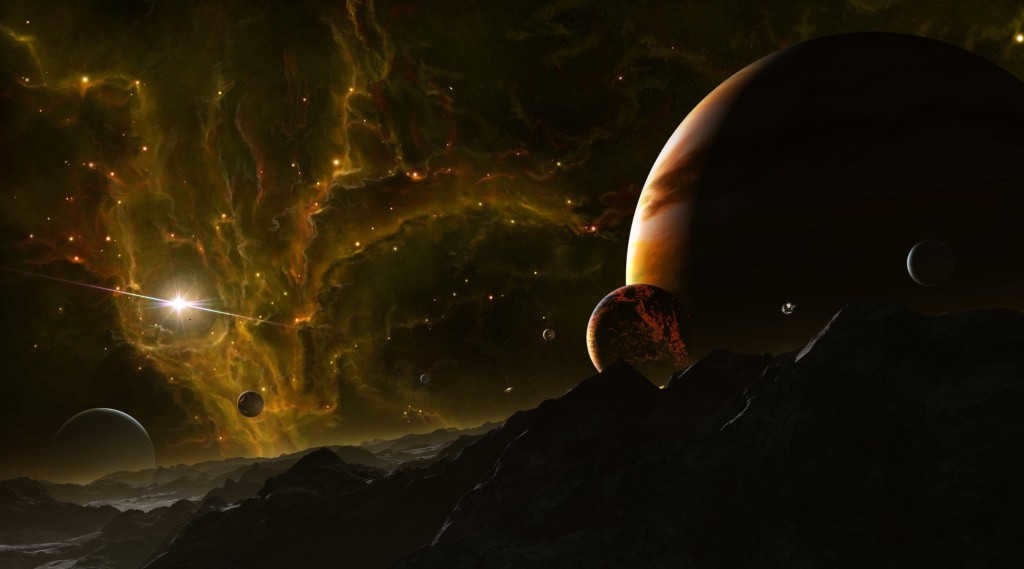
The Universe is home to a multitude of entities, with their age, genesis, characteristics, and phenomena being a perpetual enigma that humanity has been unraveling for countless millennia.
Fascinating Facts about the Cosmos
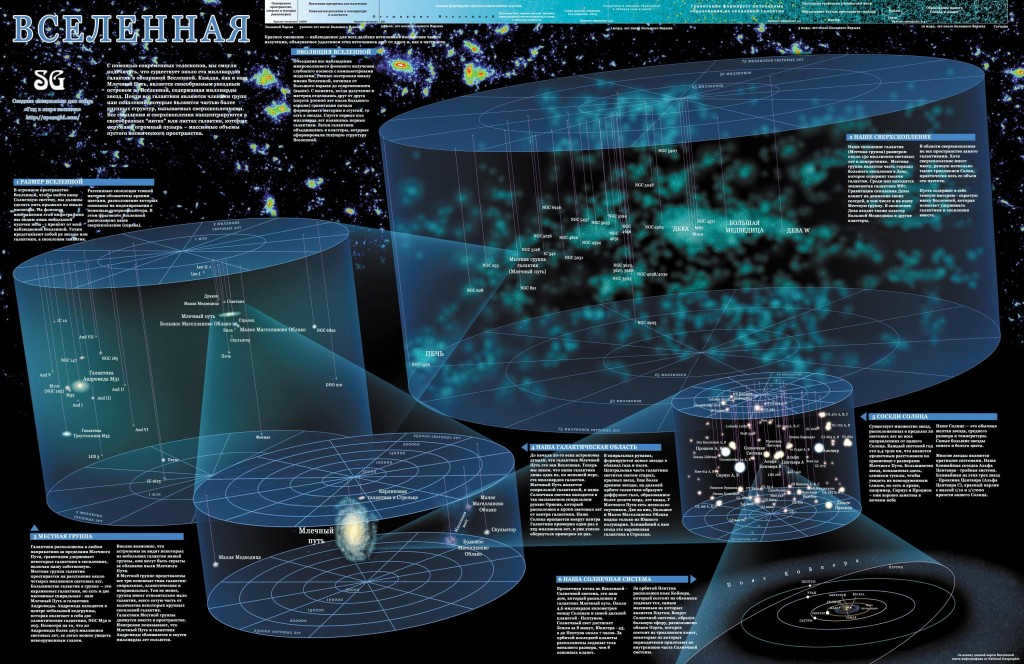
Basic facts about the Universe
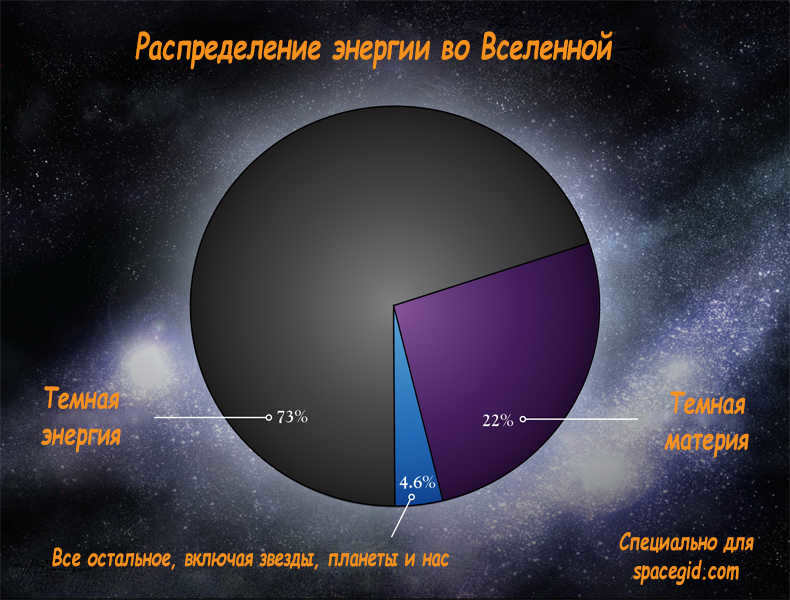
The way energy is spread out in the Universe
A visual representation of the closest barriers, elevated platforms, and advanced optical devices.
During the investigation of the structure of the Universe, a connection was made with the hexagonal patterns found in bee honeycombs. The dimensions of these cells are nearly unimaginable – ranging from 100 to 300 million light-years. The spaces between these walls are known as woads, and they exhibit traces of dark matter. These structures make up half of the entire cosmos. Alongside the barriers, there are clusters of galaxies. Within these clusters, there is an incredible diversity of objects, including dark matter, stars of varying magnitudes, interstellar gas, globular clusters, and dispersed clusters.
Resources about the subject
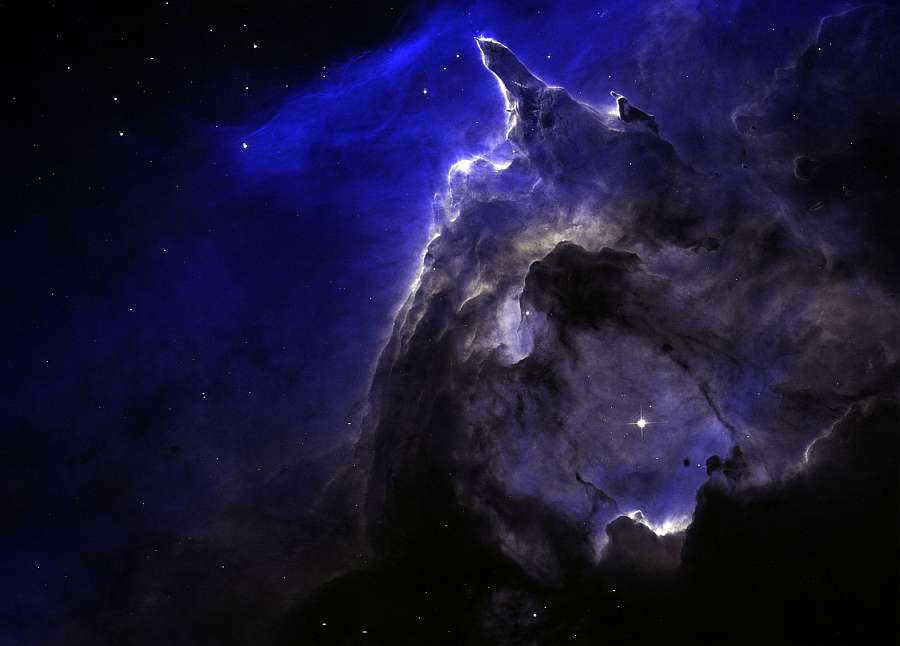
It is worth noting the remarkable quasars with their immense brightness and the astonishing power of gamma-ray bursts that arise from the radiation of a supernova transitioning into a neutron or quark star.
Diverse hypotheses regarding the origin of the Universe
All explanations outlining the formation of the Universe can be loosely categorized into religious theories, which involve the involvement of a higher power, and non-theistic theories. According to the widely accepted scientific theories, the Universe originated from the Big Bang, which occurred approximately 13.7 billion years ago. This event marked the emergence of the Universe from a state of cosmological singularity. Since that minuscule moment, the Universe has continuously expanded in space and progressively cooled down.
The intricate formation of the Cosmos

The composition of the Universe
It is well-known that stars are concentrated in clusters, which eventually merge into significant collections of celestial objects – galaxies. However, this is not the final stage of evolution. Following this, superclusters of galaxies emerge, consisting of thousands of objects. This organization of matter in the Universe, which can be observed and studied, is referred to as large-scale structure in cosmology. Giant galaxy clusters are not confined to their motion by gravitational forces. They are capable of expanding, in accordance with Hubble’s law, which explains the fundamental mechanisms behind the expansion of the Universe’s boundaries. An intriguing fact: the Earth and the farthest supercluster of galaxies from us are separated by 7 billion light years. The mass of this distant giant is a quadrillion times greater than that of the Sun (expressed as a number with forty-five zeros in tons). Galaxy clusters that are formed in the shape of filaments have become vast cosmic constructions. These filaments are separated by voids, areas in which there is no matter. In the expanse of space, it is these filaments and voids that come together to form flat structures known as walls.
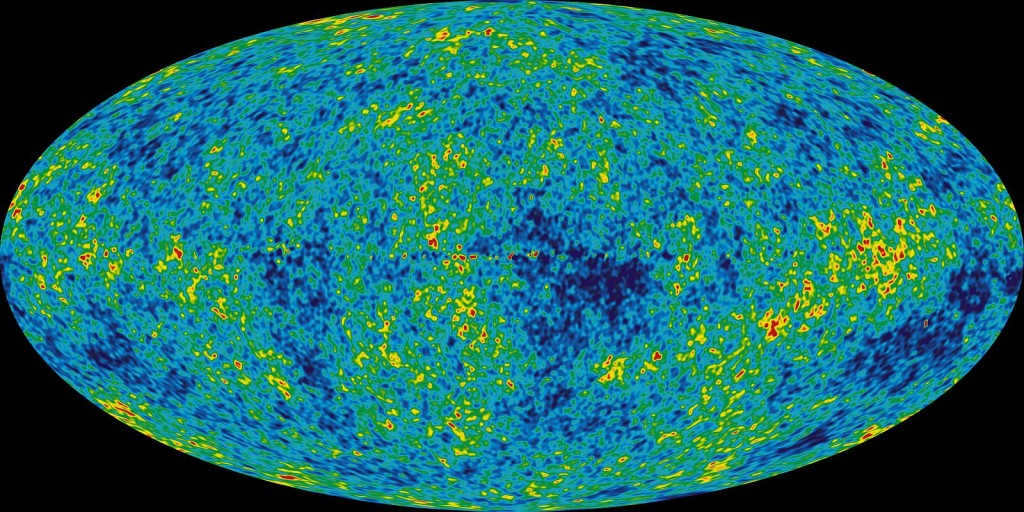
An interactive map showcasing relic radiation detected by the Plank satellite.
The background radiation, which is the residual energy from the Big Bang, is consistently observed in outer space. It is considered to be the spectrum of a perfect black body. The initial temperature of this radiation has cooled down to absolute zero due to the vast expansion of the Universe, now measured at 2,720 K. Scientists first noticed this radiation in 1941, and in 1948 they confidently theorized its existence as a result of the Big Bang. They were able to estimate its temperature parameters. In 1965, Penzias and Wilson used an experimental instrument to measure the temperature of relic radiation.
Explore the interactive map showcasing relict radiation.
There is a theory that the cosmic microwave background radiation is a result of the birth of the most basic atom – hydrogen. Prior to this stage in the Universe’s history, it existed within a unique substance known as plasma, which had an incredibly high density. Scientists are able to observe this relic radiation using specialized telescope devices located in Antarctica, as well as radio telescopes. Analyzing this radiation presents a challenging yet fascinating and valuable endeavor for contemporary scientific research.
Observing objects that are far away

The James Webb Space Telescope
It is incredibly challenging to comprehend the sheer number of stars that populate the universe. Scientists have experimentally determined that its diameter should reach 93 billion light-years. Additionally, the farthest object observed by modern technology is calculated to be approximately 14 billion light-years away. These vast scales and colossal distances are evident in every known direction. There is a span of 13.2 billion light-years between our solar system and the most remote galaxy. The existence of this incredibly distant object has only been confirmed through infrared detection. The radiation that reaches us provides information about the galaxy, but due to the time it takes to travel, we observe it as it appeared billions of years ago.
Challenges Ahead for the Future of the Universe
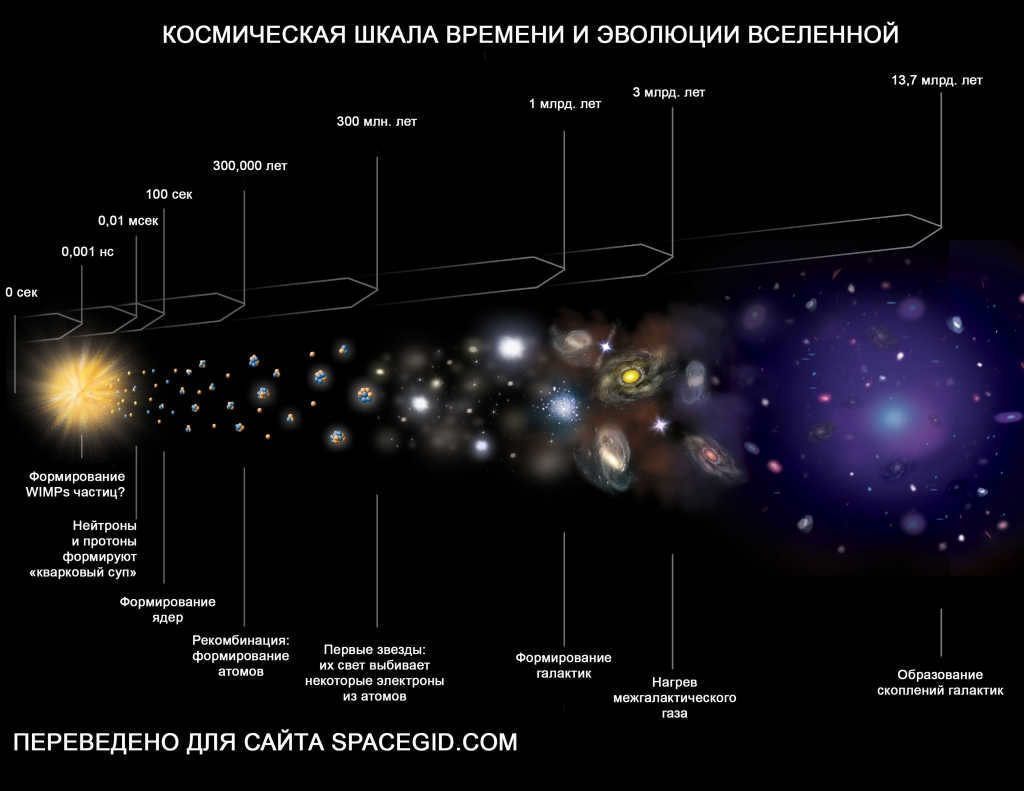
The composition of the Universe
Scientists are continuously searching for answers to the question of what lies ahead for the Universe. There are numerous hypotheses about the future of the cosmos, each predicting a different outcome. These range from the complete destruction of our current world to the infinite existence of the Universe. One possible scenario for the Universe’s development is the occurrence of repeated Big Bangs. At a critical point, the force of expansion would overcome the gravitational force that holds galaxies and stars together. As the Universe continues to expand, planets and smaller objects would cease to exist. Eventually, just before the explosion, atoms would collapse. This universal catastrophe is predicted to happen in 22 billion years. What comes after is impossible to determine, as the current laws of physics would no longer apply.
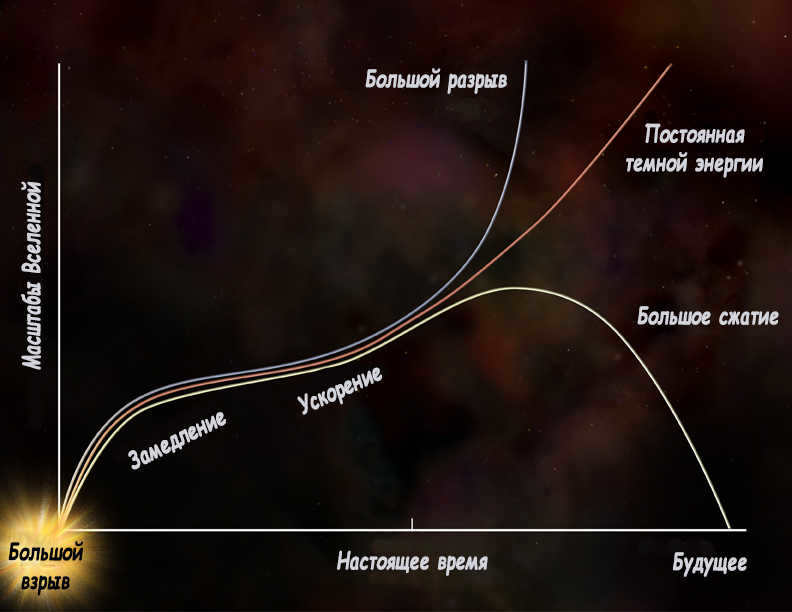
Slowing down the rate of expansion of the Universe could trigger a dynamic process known as the Great Compression. This phenomenon will result in the formation of a mega-scale of stars taking the place of the currently vibrant Cosmos. The birth of stars within galaxies will continue unabated, but as the boundaries of the Universe decrease, its temperature index will steadily rise. Eventually, all planets will evaporate and the existing matter will undergo a transformation into black holes. The merging of these entities will give rise to a singularity in the form of a massive black hole. Subsequently, an era without a discernible energy source, commonly referred to as the “eternal darkness” period, may follow. However, optimistic scientists argue that this will be succeeded by another Big Bang, thus underscoring the infinite cyclical nature of these cosmic processes.
It seems that the issue of the origin of the Universe will continue to be unresolved until the very end, and it is this factor that determines the predictions for the evolution of the Universe. In the field of astronomy, there are no precise definitions for many phenomena, and there are only hypotheses put forward to explain them. This once again highlights the extraordinary and intricate nature of the vast universe, in which our comfortable Earth travels at an astonishing speed.
Enjoyed the article? Share it with your friends!

Without a doubt, the Universe is characterized by its immense variety in structure and composition. It encompasses not only individual particles, but also entire formations and communities. Moreover, there exists a profound interrelation among all entities in the vast expanse of outer space.
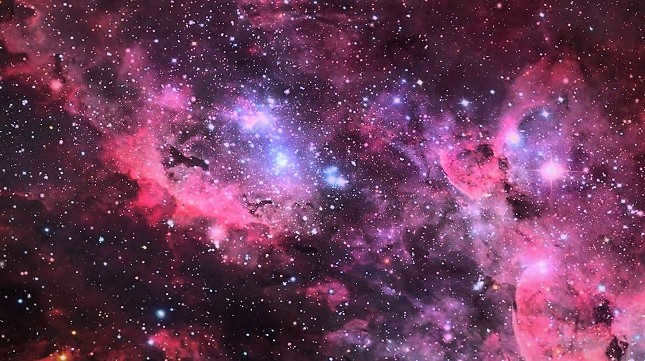
The makeup of the Universe
Scientists have determined that the Universe is comprised of a vast number of galaxies. Currently, there are approximately 100 billion galaxies, and that’s just the ones we have observed.
Interestingly, the majority of galaxies are actually grouped together. These groups form galaxy clusters, which can contain hundreds of individual systems. Additionally, there are superclusters that consist of thousands of galaxies.
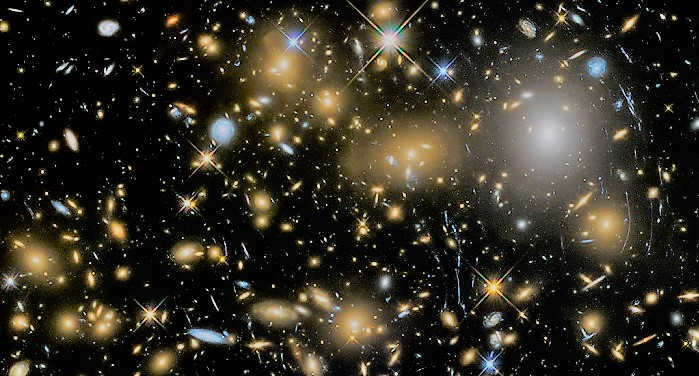
A galaxy is a gravitational force-bound system. By definition, galaxies are composed of:
- Planets, stars, and black holes, which make up about 1% of their mass,
- Interstellar gas and dust, which make up between 10% and 30% of their mass,
- The remaining bulk is comprised of dark matter.
However, there are regions known as voids, which are essentially empty spaces within galaxies. These voids lack stars and have a matter density that is less than one-tenth of the average density of the Universe.

Galactic structure
Throughout history, humans have been fascinated by the composition and organization of the Universe. The sheer vastness and complexity of the Universe never fails to captivate and inspire us. It truly is a breathtaking sight.
Although there is a great variety of stellar associations, they all share a common structure that is worth highlighting.
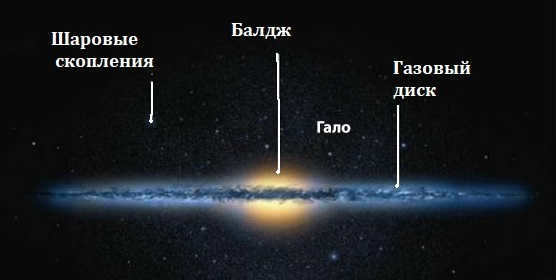
- The core serves as the central hub, functioning as both the heart and the individual entity of a galaxy. It can be said that the essence of the galaxy resides within it.
- The disk encompasses the majority of the galaxy’s gas, dust, and stars.
- The bulge represents the central region, radiating brightness and serving as the innermost component of the galaxy.
- The halo is the outermost sphere that smoothly extends from the bulge.
- Not all galaxies possess arms, which consist of young stars and gas. These arms can vary in their degree of twistiness.
- A bar or lintel refers to a dense formation of gas and stars.
The characteristics of galaxies
After thorough examination, galaxies have been categorized into various types and classifications. Furthermore, researchers have discovered that these cosmic structures can interact with one another, but only when they are in close proximity. Additionally, the interaction between galaxies is dependent on their mass and size. This interconnection between galaxies can ultimately result in their merging together.
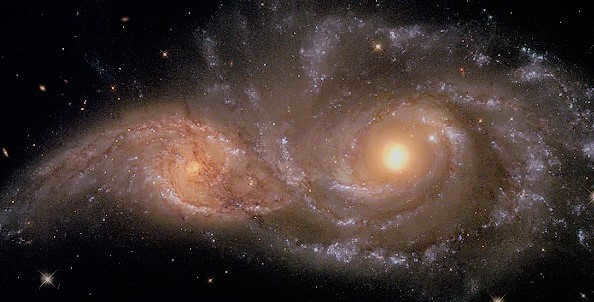
The configuration of the Universe
The inquiry into the configuration and dimensions of the universe remains enigmatic and indefinite. This is due to the fact that there is no clear-cut answer. Scientists propose various hypotheses, yet none have been substantiated.
Naturally, the exploration of outer space persists. It is probable that one day we will ascertain the precise shape of our planet.
